Women In Science
How Dr. Julia Mofokeng is Rewriting the Story of Plastic Waste
Her innovative research on biodegradable polymers offers a promising solution to the global plastic pollution crisis
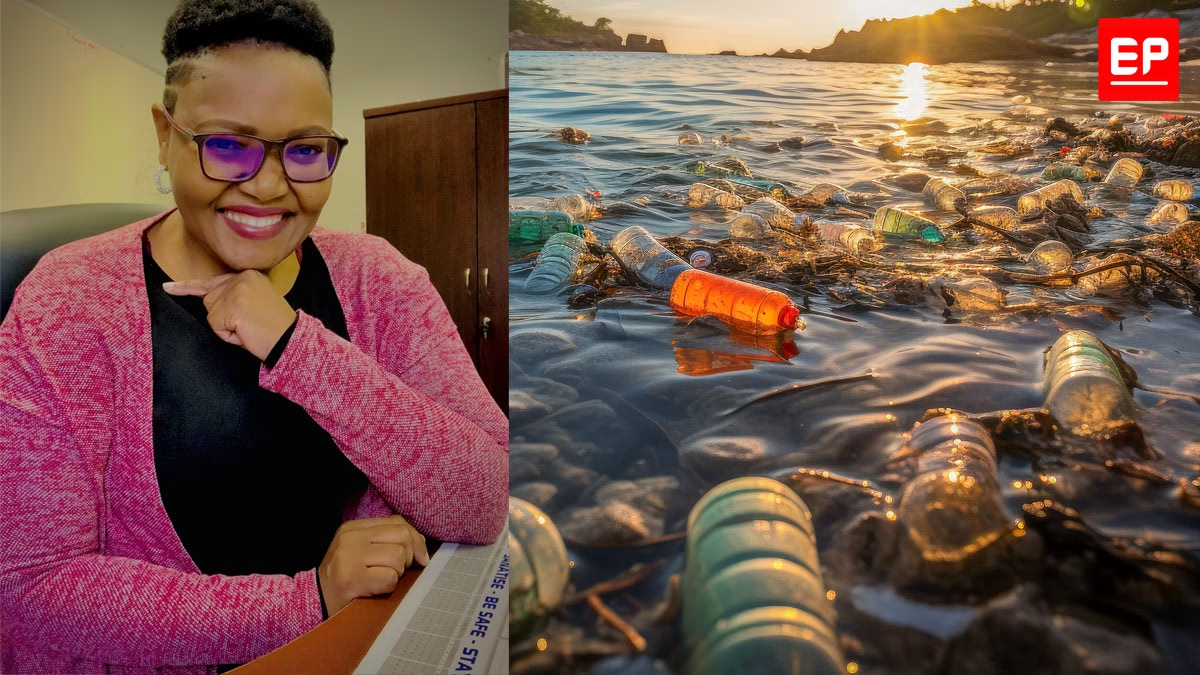
EP WOMEN IN SCIENCE introduces Dr. Julia Puseletso Mofokeng from South Africa, whose journey from research assistant to respected scientist reflects her perseverance and dedication to the field of science. Her innovative research on biodegradable polymers offers a promising solution to the global plastic pollution crisis. These large, chain-like molecules provide an environmentally friendly alternative to petroleum-based plastics. Dr. Mofokeng’s story will undo-ubtedly inspire more women to pursue and excel in scientific careers.
Julia Puseletso Mofokeng, a Senior Lecturer and Researcher in the Department of Chemistry at the University of the Free State (UFS), is contributing to the global fight against plastic pollution through her innovative research on biodegradable polymers—large, chain-like molecules that provide an environmentally friendly alternative to petroleum-based plastics. As she advances her research into polymers that degrade naturally, Dr. Mofokeng is playing a crucial role in addressing one of the most pressing environmental challenges of our time.
A Spark of Curiosity: The Early Years
Dr. Mofokeng’s path to becoming a scientist was anything but typical. Her journey began not in a traditional ecosystem but in a research laboratory at the University of the North, Qwaqwa Campus, in 1999. “I was appointed as a Research Assistant, responsible for cleaning the postgraduate research labs,” she recalls. “But it wasn’t just cleaning—I became fascinated by the experiments and projects the researchers were working on.”

The laboratory was a vibrant place, with researchers studying a variety of topics, including anti-cancer drugs and polymer science. “I would clean quickly so I could watch them work. They were kind enough to let me help with some tasks, and over time, I learned a lot from them. It sparked something in me,” Dr. Mofokeng explains.
Her passion for science blossomed even though she had no formal science background from secondary school. The experience ignited her curiosity, leading her to pursue an undergraduate degree in chemistry. “At first, I didn’t think I could study science at a university level, but my mentors saw potential in me. They encouraged me to keep going and helped me realize that I could pursue a career in this field,” she says.
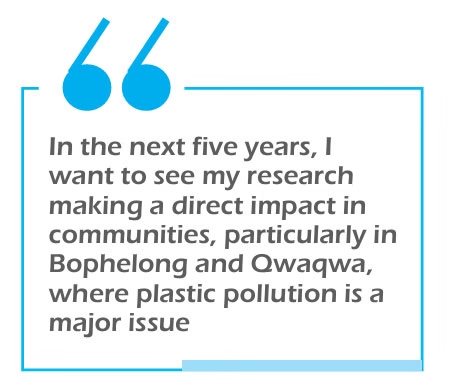
In 2003, after the University of the Free State merged with Qwaqwa Campus, Dr. Mofokeng was able to enroll in the Bachelor of Science (B.Sc.) degree program, beginning with the Extended Program due to her non-traditional academic background. “It was a struggle, but I worked hard. My mentors, particularly Prof. Joseph Bariyanga, pushed me to keep learning and growing,” she recalls.
From Research Assistant to Researcher
By 2008, Dr. Mofokeng had completed her B.Sc. degree and decided to pursue an Honours degree in Polymer Science. It was during this time that she began to focus on the environmental issues that would shape her career. “I had always been concerned about plastic waste in my community. I realized that finding alternatives to petroleum-based plastics could help address this growing environmental problem,” Dr. Mofokeng shares.
Her decision to pursue biodegradable polymers was driven by a personal desire to contribute to environmental sustainability. She embarked on her Honours research project under the guidance of Dr. Buyiswa Hlangothi, exploring thermoplastic starch sourced from corn starch for possible applications in packaging. “My research involved studying biodegradable polymers that could replace petroleum-based plastics, and I felt this was an area where I could make a real impact,” she says. This research formed the foundation of her Masters and eventually PhD work.
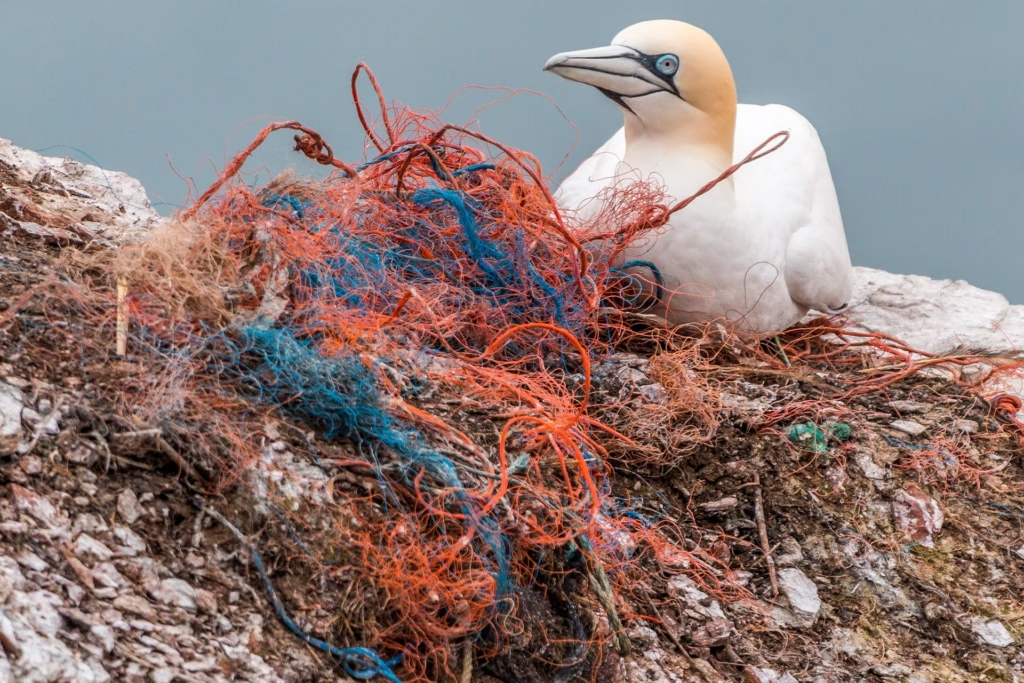
Her Masters research, conducted under the supervision of Prof. Adriaan Luyt, took her to Hungary in 2009, where she worked on a collaborative project comparing biodegradable Polylactic Acid (PLA) and petroleum-based Polypropylene (PP) polymers. The focus was to see if PLA could replace PP for short-shelf-life applications, a common use for disposable plastics. “The results were promising, and it was an eye-opening experience. While in Hungary, I had the opportunity to witness the production of biodegradable packaging materials, like water bottles and toothbrushes, made from PLA and thermoplastic starch,” she recalls.
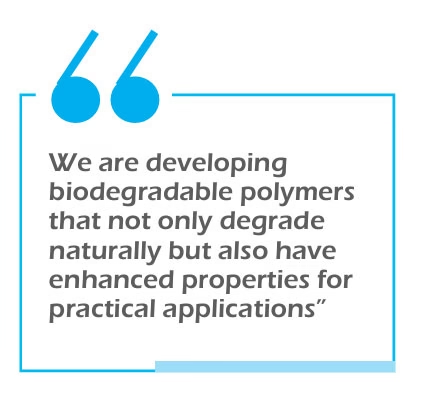
Her work during this time led to her MSc degree in Polymer Science in 2011, and one of her first research papers gained significant attention, receiving over 370 citations on Google Scholar to date. “That publication was a turning point for me,” she says. “It motivated me to continue pushing the boundaries of what was possible with biodegradable polymers.”
In 2011, Dr. Mofokeng began her PhD research, focusing on biodegradable polymer blends and nanocomposites, using titania as a filler. Over the next few years, she published five successful research articles, contributing to her growing reputation as an expert in the field of polymer science. “The success of my research was rewarding, but what mattered most was that it could contribute to solving a major environmental problem,” she says.
Challenges and Triumphs
As a woman in science, Dr. Mofokeng has faced her share of challenges, particularly the lack of female mentors in the early years of her career. “The lack of women mentors and leaders available growing up, made me think and believe that certain positions are made for men only. It was not easy to find strong women role models in my early years of figuring out what I wanted to do,” she admits. However, things began to change as she moved through her university studies, especially in the science faculty, where her lecturers were predominantly female. “Surprisingly my lectures were mostly women. That encouraged me to study hard and succeed because I now had women role models I looked up to,” she says.
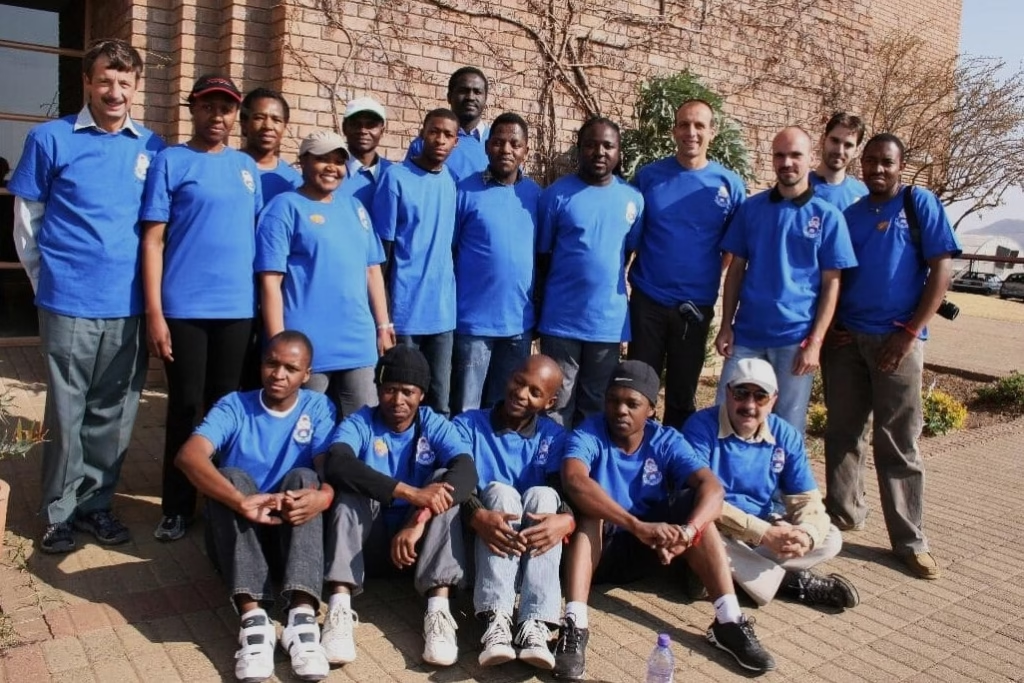
Despite the encouraging presence of female mentors, Dr. Mofokeng’s journey wasn’t without its difficulties. “When I started studying at the university, particularly in the science faculty where the student population was dominated by males, surprisingly my lectures were mostly women. That encouraged me to study hard and succeed because I now had women role models I looked up to,” she recalls. “When I was doing my honours degree, I was the only female student in a class of six. I found myself in a research group with very few women, which was a stark contrast to the male-dominated environment I was used to,” she recalls. “When we had international visitors to our institution, I realized that out of a group of 18, I was the only woman, apart from my two lecturers.”
This realization motivated Dr. Mofokeng to change the narrative. “I decided that if I wanted to see more women in science, I had to be that role model,” she says. She began speaking at events and creating awareness through social media. “I started posting about my milestones—my graduations, my international research experiences, and my achievements—in order to inspire other women to pursue science.”
Her efforts paid off. “The student population in our department has changed. Today, we have many more female students in science, and they are excelling,” she says with pride.
Biodegradable Polymers for Environmental Sustainability
Dr. Mofokeng’s current research focuses on the development of fully biodegradable polymer blends and nanocomposites, designed to address plastic pollution and environmental degradation. “Plastic pollution is a serious global issue. Each year, between 19 to 23 million tonnes of plastic waste leak into aquatic ecosystems, causing significant harm to marine life and ecosystems,” she explains.
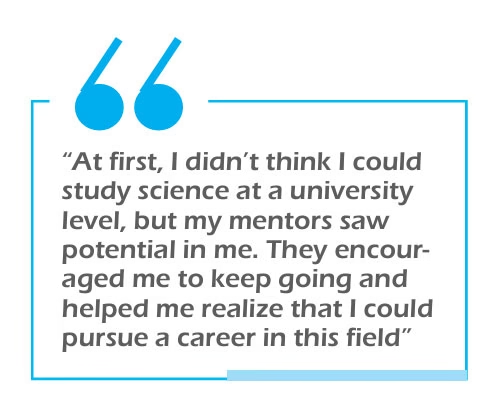
Her work aims to offer a sustainable alternative to petroleum-based plastics, which are notoriously difficult to break down in the environment. “We are developing biodegradable polymers that not only degrade naturally but also have enhanced properties for practical applications,” Dr. Mofokeng explains. “We’re working with a variety of materials—natural fibers, inorganic fillers, and even carbon-based composites—to improve the strength, thermal properties, and flame retardancy of the polymers.”
One of Dr. Mofokeng’s most exciting projects involves using biodegradable polymers to help remove heavy metals from contaminated water. “We are exploring the use of graphene oxide combined with biodegradable polymer blends to remove contaminants like lead from water. This has the potential to address environmental issues in communities where polluted water is a major problem,” she says.

Her work is already yielding significant results, with several articles published in high-impact journals. “The goal is to develop polymers that can be used not only in packaging but also in other critical areas such as medical devices, water purification, and even aerospace materials,” Dr. Mofokeng shares.
Shaping the Future
Looking ahead, Dr. Mofokeng is focused on expanding her research and mentoring future generations of scientists. “In the next five years, I want to see my research making a direct impact in communities, particularly in Bophelong and Qwaqwa, where plastic pollution is a major issue,” she says. She envisions a world where her research helps communities reduce waste and adopt more sustainable practices. “I also want to continue mentoring young women and men who aspire to work in science and technology,” she adds.
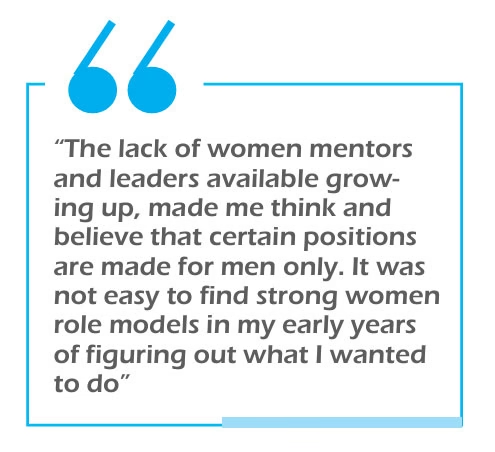
Dr. Mofokeng has also set ambitious goals for her career. “I’m working towards becoming an Established Researcher in the next few years, with the long-term goal of becoming a full Professor of Chemistry and Polymer Science,” she reveals. “I want to expand my research group and establish even more international collaborations, particularly in the areas of biodegradable materials and environmental sustainability.”
Dr. Julia Puseletso Mofokeng’s journey from a research assistant to a respected science researcher is an inspiring tale of perseverance, passion, and dedication to both science and community. Her research on biodegradable polymers holds the potential to address the global crisis of plastic pollution, while her commitment to mentoring young scientists is helping to shape the next generation of innovators. Her legacy will undoubtedly inspire countless women to follow in her footsteps and make their own mark in the world of science.
Women In Science
Dr Tafadzwa Maramura: Leading the Fight for Clean Water Access in Africa
Dr Tafadzwa Clementine Maramura has dedicated her academic career to tackling one of the continent’s most urgent challenges — sustainable water governance

As Africa grapples with deepening water insecurity, a trailblazing researcher at the University of the Free State (UFS) is stepping into the global spotlight with a mission: to ensure every African has access to clean, safe water.
Dr Tafadzwa Clementine Maramura, a Senior Lecturer and NRF-Rated Researcher in the Department of Public Administration and Management at UFS, has dedicated her academic career to tackling one of the continent’s most urgent challenges — sustainable water governance. Her commitment was recently recognised with a historic appointment as the first black African woman to serve as Secretary of the Institutional Governance and Regulations Framework, a specialist subgroup within the International Water Association (IWA).
“Water is a basic human right, you can survive without electricity and other luxuries, but not without water. Each time you brush your teeth or flush your toilet with at least 15 litres of clean water or you are watering your garden with clean water, there are people that actually don’t have access to basic drinking water,” said Dr Maramura in a statement emailed to EdPublica.
“My research focuses on water governance and sustainable service delivery, public policies, and the green economy in the African, as well as the South African, context
The statistics underscore the urgency. According to Greenpeace, more than 1.34 billion Africans — over 90% of the continent’s population — face some form of water insecurity. The United Nations World Water Development Report 2024 also reports that 2.2 billion people worldwide lack access to safely managed drinking water.
Dr Maramura’s research is rooted in understanding how governments, particularly in Africa, can bridge this glaring gap. “My research focuses on water governance and sustainable service delivery, public policies, and the green economy in the African, as well as the South African, context,” she explained. “What I found is interesting and really saddening at the same time. When you break it down, you realise that one in every three people in Africa don’t have access to potable water.”
But for Dr Maramura, this issue is more than a policy problem — it’s a deeply personal and gendered one. “Access to clean water is not just a basic need; it is a matter of dignity, equality, and survival. As a young African woman, through my research, I see first-hand how the burden of water scarcity falls disproportionately on women and girls, robbing us as women, of education, economic opportunities, and health.”
“But we are not just victims – we are leaders in this fight. By empowering women and investing in sustainable water solutions, we can transform our communities and break the cycle of poverty. The time for action is now because water is life, and every African deserves it.”
Her upcoming book chapters, to be released in June, explore the water-health nexus in fragile states — aligning two of the Sustainable Development Goals (SDGs): Goal 3 (Good Health and Well-being) and Goal 6 (Clean Water and Sanitation). She stresses the interconnectivity of these issues.
“You cannot solve problems in isolation; you cannot look at the water problem in isolation. If you have a water problem, you have a health and education problem because kids can’t go to school if there is no water. Hospitals can’t function when there is no water,” she said. “How can we ensure that we merge the two together and ensure researchers working on health and water can find common ground to address any challenges arising from the lack of water so that we don’t have these health issues?”
Despite being an upper-middle-income country, South Africa continues to face major water delivery issues, especially in rural and impoverished areas. Millions still rely on ventilated pit latrines due to lack of access to modern sanitation.

Dr Maramura believes there is no one-size-fits-all solution but emphasizes a collaborative, inclusive approach. “There is work that needs to be done. The government, private sector, the communities, as well as other role players need to work together. South Africa is a water-stressed country with rainfall below the global average. We realised that we have scarce groundwater resources.”
She calls on communities to become more informed and involved. “The community needs to understand, participate, and be aware of how much damage we can do by just drilling boreholes and digging wells.”
On the role of the private sector, she notes: “They need to know what it is that they can do to ensure that they also play a part through their corporate social responsibility and philanthropic dimensions in assisting the community.”
And for government, she adds: “The policies are there. The government needs to consult with the communities, the private sector, and all other relevant stakeholders. They need to involve affected communities and after consultations, they need to engage these communities because they understand their problem best.”
Through her research, advocacy, and international leadership, Dr Maramura is not only asking the hard questions about water governance — she’s working to reshape the answers for the future of Africa
Women In Science
Neena Gupta: Shaping the Future of Algebraic Geometry
She was awarded the Infosys Prize for her groundbreaking work on the Zariski Cancellation Problem, a fundamental question in algebraic geometry first posed in 1949 by Oscar Zariski, one of the pioneers of the field

EdPublica has the privilege of speaking with Professor Neena Gupta, the recipient of the prestigious Infosys Prize 2024 in Mathematical Sciences. Professor Gupta is a faculty member in the Theoretical Statistics and Mathematics Unit at the Indian Statistical Institute, Kolkata. She was awarded the Infosys Prize for her groundbreaking work on the Zariski Cancellation Problem, a fundamental question in algebraic geometry first posed in 1949 by Oscar Zariski, one of the pioneers of the field. In 2014, she made a striking contribution by proving that Asanuma’s 3-dimensional affine variety provides a counterexample to Zariski’s original Cancellation Problem in positive characteristic. Her solution to this long-standing problem, which challenges a key assumption about the structure of affine varieties, has had a profound impact on both algebraic geometry and commutative algebra.

In this interview, we discuss the inspiration behind her research, the broader implications of her work, and the challenges she has faced as a woman in a historically male-dominated field. Professor Gupta also shares valuable insights for young aspiring mathematicians, offering advice on how to navigate the complexities of both academic life and career development.
Dear Madam, congratulations on winning the Infosys Prize 2024 in Mathematical Sciences! How does it feel to receive this prestigious recognition for your work on the
Zariski Cancellation Problem?
I am very happy to receive this recognition. It gives me a sense of fulfillment that the broader mathematical community (not just experts in my area) and society are recognizing the importance of my work.

Your work has had a significant impact on affine algebraic geometry. What was the initial inspiration or motivation behind pursuing this area of research, and what makes this problem so fundamental in algebraic geometry?
I first became aware of this area of research through lectures in algebra seminars delivered by Professor Amartya Kumar Dutta, long before he became my official supervisor. Some of the fundamental problems in this area are simple to state, and even an MSc student can understand and appreciate their importance. My curiosity to learn more about them motivated me to study the literature in this area and eventually pursue research under the supervision of Professor Dutta.

Can you briefly explain the Zariski Cancellation Problem to our readers and describe the significance of your solution in resolving this long-standing question?
The problem asks: if the affine cylinder over an affine variety is isomorphic to an affine space, does it mean that the affine variety is necessarily isomorphic to an affine space? I was the first to show that an affine 3-dimensional variety, constructed by T. Asanuma, is a counterexample to the Zariski Cancellation Problem in positive characteristic.
Your result answers the Zariski Cancellation Problem in the negative for positive characteristic. What are the broader implications of this breakthrough in algebraic geometry and commutative algebra?
The affirmative solution to the Zariski Cancellation Problem by Fujita, Miyanishi, Sugie, and Russell for two-dimensional space has been applied in several problems, leading to new theories. Therefore, it was desirable to know whether cancellation could occur in higher dimensions. My solution to the problem is negative, providing a crucial check for mathematicians to avoid the mistake of assuming cancellation in higher dimensions.
Your work on this problem revealed unexpected connections between various mathematical concepts. Can you give us an example of one such connection, and how it may influence future research in these fields?
I developed a theory that revealed surprising connections between the Zariski Cancellation Problem and other fundamental problems such as the Characterisation Problem, the Epimorphism Problem, and the Affine Fibration Problem. The theory simplified the technical arguments in my earlier papers, provided deeper insights into recent breakthroughs (including my own results), and may have paved the way for new discoveries. I used ideas from this theory to construct higher-dimensional counterexamples to the Zariski Cancellation Problem in positive characteristic.

You have achieved significant milestones in your career, including being one of the youngest recipients of the Shanti Swarup Bhatnagar Prize and the Nari Shakti Puraskar. As a woman in a field that has historically seen fewer women, what challenges have you faced, and what advice do you have for young women aspiring to build careers in mathematics and science?
I have faced the challenges that most women face, such as balancing family responsibilities, especially raising children. Fortunately, I have not faced any discrimination in the workplace, and I have a supportive family that has always shared my responsibilities, allowing me to focus on my research.
Do you think the landscape for women in mathematics and science has evolved over the years? What steps can be taken to further encourage young girls and women to pursue careers in these fields?
Certainly, there are now more women in mathematics than there were earlier, and this number is only going to increase. Having role models in this area always helps. We need to continue supporting these role models and ensure that young girls see these women as proof that they too can succeed in mathematics and science.
As a role model, how important is it for women to be represented in the mathematical sciences, and how can institutions and mentors better support women in advancing their careers?
Women constitute half of our strength, and they are equally capable of contributing to basic science and mathematics—in fact, in almost all areas of life. However, they often take on additional responsibilities within the family. With the support of family, government, and institutional measures, women can also contribute freely to the development of science and technology.

The field of algebraic geometry continues to evolve rapidly. What are some of the emerging areas within this field or in related fields that excite you, and what questions are you most eager to explore in your future work?
I find the embedding problem of Abhyankar-Sathaye very exciting. It presents an intriguing challenge, and I am eager to explore the deeper connections it may have with other areas in algebraic geometry.
As a winner of the Infosys Prize, you will undoubtedly inspire the next generation of mathematicians. What message would you like to share with young researchers who are just starting their journeys in mathematics and science?
It may initially seem difficult, but hard work and perseverance always pay off. I would urge young researchers to start early, focus on concepts, pursue research in areas they are passionate about, and not be intimidated by the size or complexity of problems. Keep pushing forward, and you will make breakthroughs in time.
Interviews
‘Significant under-representation of black women in academic and research leadership’
Addressing the significant underrepresentation of Black women in senior academic and research leadership roles in the country, Dr Claudia Ntsapi discusses her latest research, the challenges faced by women in science, and more in an interview with EdPublica.

She has drawn recent attention for her ground-breaking research initiative related to neurodegenerative diseases. Her work explores the potential benefits of medicinal plants as supplementary treatments for neurodegenerative diseases such as Alzheimer’s, Parkinson’s, and Huntington’s. In this edition of ‘EdPublica’s Women in Science’ column, we introduce Dr Claudia Ntsapi, a researcher at the University of the Free State (UFS) in South Africa. Addressing the significant underrepresentation of Black women in senior academic and research leadership roles in the country, she discusses her latest research, the challenges faced by women in science, and more in an exclusive interview with EdPublica.
Dr Ntsapi, PhD, is a registered Natural Scientist (Pri. Sci. Nat) with the South African Council for Natural Scientific Professions (SACNASP). She joined the University of the Free State in late 2019 as a lecturer in the Department of Basic Medical Sciences. In addition to her teaching responsibilities, Dr Ntsapi leads the NeuroCancer Research Group, overseeing a multidisciplinary team specialising in cell biology, cell physiology, microscopy, biochemistry, and pharmaceutical methodologies.
Could you share details about your educational journey and current professional role?
I acquired my undergraduate and postgraduate qualifications at Stellenbosch University, completing a Master of Medical Science in Human Genetics in 2015 and a PhD in Physiological Sciences with a specialization in Neurophysiology in 2018. My current job profile is that of a Senior Lecturer at the University of the Free State’s Faculty of Health Sciences, within the School of Biomedical Sciences, Department of Basic Medical Sciences. In this role, I occupy administrative, academic, research, and leadership positions at both faculty and institutional levels.
“I admired professionals in lab coats and their selfless passion for finding answers and solutions to health-related conditions that remain clinical challenges using scientific methods and evidence
What sparked your interest in pursuing the Sciences, and what were your career aspirations?
As a high school learner, my academic strengths and interests were in chemistry, math, and biological sciences. While I was initially unsure about the exact career field I wanted to pursue, I was inherently curious and fascinated by professionals working in laboratories. I was a huge fan of TV series such as CSI: Crime Scene Investigation, which follows a team of forensic investigators solving crimes using scientific methods and evidence, and Numbers, which combined crime-solving with mathematics. These shows inspired me to aspire to a field reminiscent of what I witnessed in these series. I admired professionals in lab coats and their selfless passion for finding answers and solutions to health-related conditions that remain clinical challenges using scientific methods and evidence. True to my nature as an introvert, I continue to find myself most “at home” when working in a laboratory setting. While I could not have imagined the trajectory that my academic career would take, I am without a doubt in the right profession given my innate curiosity, passion for teaching, skills transfer, and biomedical research.
What do you think about the current status of women in science careers in your country?

Despite the gains in women’s participation in science careers in South Africa, women remain underrepresented in these fields. While there has been significant progress in increasing the participation of women in science-related disciplines, studies have confirmed that men continue to dominate science, technology, engineering, and mathematics (STEM) careers. This gender disparity is further heightened among Black women. Although women represent the majority of young university graduates in South Africa, only 13% of STEM graduates are women, with Black women being significantly underrepresented in higher academic and research leadership positions. This can be attributed to systemic barriers such as gender bias, lack of mentorship, and limited access to resources, which continue to hinder true equality in science careers.
At our institution, the University of the Free State (UFS), there is an increasing commitment to support emerging researchers, especially women, through mentorship and research development opportunities. This is part of our institution’s Vision 130, which aspires to foster excellence in research and increase the impact of our scholars on the broader societal context. I am privileged to be one of the selected candidates in our institution’s Transformation of the Professoriate Mentoring Programme, which aims to grow a critical mass of excellent emerging scholars at the UFS. This programme equips all its candidates with both academic and research mentorship to advance their development towards assuming senior academic and research positions. More importantly, this programme supports candidates in accessing networking and funding opportunities, contributing to their establishment as researchers with the potential to create centres of research excellence in the future. My hope is that those of us who have access to such opportunities can also use our privilege and positions to mentor more women researchers from underrepresented groups in the various fields of science.
“Although women represent the majority of young university graduates in South Africa, only 13% of STEM graduates are women, with Black women being significantly underrepresented in higher academic and research leadership positions
What are your suggestions to improve the participation of more women in science-related careers?
To improve the participation of more women in science-related careers, it is crucial to address the systemic barriers that hinder their progress. This includes creating more mentorship and networking opportunities for women, providing financial support and scholarships for female students in science career fields, and implementing national policies that promote work-life balance and support for working mothers. Additionally, efforts should be made to raise awareness about the contributions of women in science and to challenge stereotypes that discourage girls from pursuing science careers. Encouraging more inclusive and diverse work environments where women feel valued and supported is essential for increasing their participation and retention in science careers. There is also a need for progressive policies that promote the employment of Black women academics in positions of authority in STEM fields. This will ensure the availability of a diversity of women mentors and academics to offer gender-sensitive support to students.
Please tell us about your current research and its impact in the sector?
Our research group is assessing both pharmaceutically uncharacterized and the repurposing of well-known medicinal plants that have been previously reported to improve brain function in aging individuals. While these medicinal plants have shown promise in enhancing brain function in various brain-related conditions, their neuroprotective efficacy against neurodegenerative diseases remains unclear, especially as the disease progresses in severity. This is one of the focus areas of our ongoing research. I am involved in several multidisciplinary projects, collaborating with both national and international research experts from countries such as Denmark, the UK, and various national institutions, as well as colleagues from the University of the Free State. One of the primary goals of our ongoing research projects is to explore the therapeutic potential of underexplored nutraceuticals and indigenous medicinal plants in preserving vulnerable neuronal cell populations using 3D based neuronal cell models.

These models will be developed in collaboration with researchers in the University of the Free State’s School of Clinical Medicine, utilizing the CelVivo ClinoStar 2 System. This cutting-edge technology, mimics ‘animal model-like’, allowing scientists to generate cell-based models that closely resemble in-vivo like conditions. We will specifically focus on the technology’s applications in studying age-related neurodegenerative disorders, such as Alzheimer’s disease. The potential impact of this research is immense, as it may contribute to the development of novel therapeutic strategies for combating the debilitating progression of neurodegenerative diseases, ultimately improving the quality of life for affected individuals and their families.
What is your message to aspiring students who wish to take a career in the sciences?
Pursuing a career in the sciences requires dedication, hard work, relentless effort, and an unwavering commitment to learning and growth. It is a path filled with challenges, but the rewards are immense for those who are passionate about contributing to the betterment of humanity through medical science research. This means working tirelessly to uncover new insights, develop innovative solutions, and share your findings with the world. It means staying committed to your goals, even when faced with setbacks, and always striving to push the boundaries of what is known. Marie Curie once said, “I am among those who think that science has great beauty. A scientist in his laboratory is not only a technician: he is also a child placed before natural phenomena which impress him like a fairy tale.” This sense of wonder and curiosity should be at the heart of your scientific endeavours as an aspirant biomedical researcher. You must be driven by a deep curiosity and a desire to understand the world around you. The journey is not just about personal success but about making a meaningful impact on society. The hard work and perseverance you invest in your studies and research will not only advance your knowledge but also contribute to solving real-world problems and improving the quality of life for others. Lastly, remember that science is a collaborative field.
“Marie Curie once said, “I am among those who think that science has great beauty. A scientist in his laboratory is not only a technician: he is also a child placed before natural phenomena which impress him like a fairy tale.”
Seek out mentors, build networks, stay humble, and be open to learning from others. Your contributions, no matter how small they may seem, are part of a larger puzzle that future generations of researchers will continue to build upon. If you are passionate about making a difference, if you are committed to the relentless pursuit of knowledge, and if you are driven by a desire to contribute to the greater good, then a career in the sciences may be the right path for you. Embrace the journey, stay curious, and never lose sight of the profound impact your work can have on the world.
-

 Society4 months ago
Society4 months agoStarliner crew challenge rhetoric, says they were never “stranded”
-

 Space & Physics3 months ago
Space & Physics3 months agoCould dark energy be a trick played by time?
-
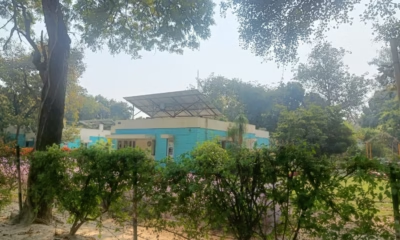
 Earth4 months ago
Earth4 months agoHow IIT Kanpur is Paving the Way for a Solar-Powered Future in India’s Energy Transition
-

 Space & Physics3 months ago
Space & Physics3 months agoSunita Williams aged less in space due to time dilation
-

 Learning & Teaching4 months ago
Learning & Teaching4 months agoCanine Cognitive Abilities: Memory, Intelligence, and Human Interaction
-

 Earth2 months ago
Earth2 months ago122 Forests, 3.2 Million Trees: How One Man Built the World’s Largest Miyawaki Forest
-

 Women In Science3 months ago
Women In Science3 months agoNeena Gupta: Shaping the Future of Algebraic Geometry
-
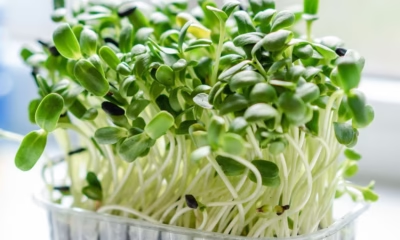
 Society5 months ago
Society5 months agoSustainable Farming: The Microgreens Model from Kerala, South India












